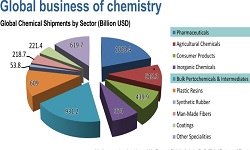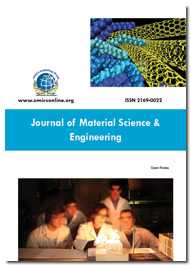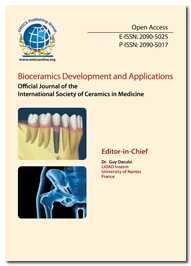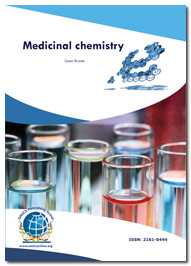Theme: Amalgamation of Theoretical and Practical Concepts where Materials are shaped into Chemicals
Materials Chemistry 2020
Chemistry Conferences welcome chemical professionals, researchers, professors, scientific communities, delegates, students, business professionals and executives from all over the world to attend the “18th International Conference and Exhibition on Materials Science and Chemistry” which includes prompt Keynote presentations, Oral talks, Poster presentations and Exhibitions.
Materials Chemistry 2020 which is the primordial chemistry conferences serves as a global platform to discuss and learn about Material Science, Material Engineering, pharmaceutical materials chemistry, biomimetic chemistry, chemical syntheses, characterization and processing of novel materials, nanochemistry, applied materials chemistry, super conducting concepts, polymer chemistry, inorganic materials chemistry, organic materials chemistry, analytical materials chemistry, physical materials chemistry and other basic principles involved in Materials Chemistry.
In the light of this theme, the conference series aims to provide a forum for international researchers from various areas of chemistry, pharmacy, materials science and chemical engineering by providing a platform for critical analysis of new designing, and to share latest cutting-edge research findings and results about all aspects of Materials Chemistry. The current meeting of chemistry conferences will be a multinational gathering and present major areas such as surface enhancement, nanotechnology, polymer science and overall applications.
Materials Chemistry Conferences | Materials Conferences | Materials Science Conferences | Chemistry Conferences | Materials Science and Chemistry Conferences
Young Scientist Benefits:
• Our conferences provide best Platform for your research through oral presentations.
• Share the ideas with both eminent researchers and mentors.
• Young Scientist Award reorganization certificate and memento to the winners
• Young Scientists will get appropriate and timely information by this Forum.
• Platform for collaboration among young researchers for better development
• Award should motivate participants to strive to realize their full potential which could in turn be beneficial to the field as whole.
Deadline for Registrations:
• Platform for collaboration among young researchers for better development
• Till December 30, 2019 – $399
• Till January 30, 2020 – $499
• Till February 28, 2020 – $599
Track 1: Smart Material Science
Smart Materials have a wide range of applications in the field of engineering. They are used in Marine, Aerospace, Compu​ter and electronic devices, Buildings and Structures, Medical Equipment Applications and many more. Smart Materials are also used in many intelligent clothing technologies, wearable technologies which involve the use of e-textiles. It is used in the structures of civil Engineering and Architecture which disclose and uncovers the ancient and spectacular architectures by human or modify the earth’s geography. The recent research in different areas such as civil engineering, structural engineering and archaeological technology is going on with different principles of environmental, geotechnical, structural and construction engineering.
For more information, please visit Smart Material Science | Materials Chemistry 2020
Track 2: Chemical Engineering
Chemical engineering is all about changing raw materials into useful products such as clothes, food and drink, and energy. Chemical engineers focus on processes and products. They develop and design processes to create products. In addition to develop useful materials, modern chemical engineering is also concerned with pioneering valuable new materials and new methods such as nanotechnology, fuel cells and biomedical engineering.
For more information, please visit Chemical engineering | Materials Chemistry Conference
Track 3: Industrial applications of crystallization
Crystallization is used at some stage in nearly all process industries as a method of production, purification or recovery of solid materials. Development of crystallization processes represents a complex and challenging issue, requiring simultaneous control of various product properties, including purity, crystal size and shape, and molecular level solid structure. Crystallization is defined as a process by which a chemical is converted from a liquid solution into a solid crystalline state. The widespread use of crystallization within industry is in part due to the fact that crystallization acts as both a separation and purification step; almost all chemical processes utilize at least one crystallization step.
For more information, please visit Industrial applications of crystallization | Materials Chemistry 2020
Track 4: Carbon Nanostructures and Graphene
Carbon nanoparticles, nanotubes and nanodiamonds, are considered as promising building blocks for the construction of novel nanomaterials for emerging industrial technologies. Nanocomposite carbon-based substrates are a large group of materials promising for medicine and various biotechnologies, particularly for coating biomaterials designed for hard tissue implantation. Graphite is one of the most common allotropes of carbon, and the most stable form of carbon under standard conditions. Nanotechnology has gained much attention in research to develop new carbon-based materials with unique properties.
For more information, please visit Carbon Nanostructures and Graphene | Materials Chemistry 2020
Track 5: Tissue Engineering
Tissue engineering is the use of a combination of cells, engineering, and materials methods, and suitable biochemical and physicochemical factors to improve or replace biological tissues. Tissue engineering evolved from the field of biomaterials development and refers to the practice of combining scaffolds, cells, and biologically active molecules into functional tissues. Nanocomposites are used as three-dimensional nano-fibril structures called scaffolds that function as biological media to support cell proliferation and differentiation in regenerative medicine. In the near future, 3D tissue-engineered models are expected to become useful tools in the preliminary testing and screening of drugs and therapies and in the investigation of the molecular mechanisms underpinning disease onset and progression.
For more information, please visit Tissue Engineering | Materials Chemistry 2020
Track 6: Nano pharmaceuticals
Nano pharmaceuticals offer the ability to detect diseases at much earlier stages and the diagnostic applications could build upon conventional procedures using nanoparticles. Nano pharmaceuticals represent an emerging field where the sizes of the drug particle or a therapeutic delivery system work at the nanoscale. Nano pharmaceutical reduces the cost of drug discovery, design & development and enhances the drug delivery process. This results in the improved Research & Development success rate which enables faster introduction of new, cost-effective products to the marketplace. Nanopharmaceuticals offer the ability to detect diseases at much earlier stages and the diagnostic applications could build upon conventional procedures using nanoparticles.
For more information, please visit Nano pharmaceuticals | Materials Chemistry 2020
Track 7: Nanodentistry
A range of synthetic nanoparticles such as hydroxyapatite, bioglass, titanium, zirconia, and silver nanoparticles are proposed for dental restoration. Reconstructive dental nanorobots are able to selectively and precisely block dentinal tubules, offering a quick and permanent cure. These nanorobots travel toward the dental pulp via the dentinal tubules. Nanodentistry has evolved as a new science of nanotechnology that helps in diagnosing, treating, preventing oral and dental disease, and improving dental health by using nanomaterials. The major field of application of microscopy and nanotechnology to dentistry is in the characterization and fabrication of dental restorative composites, both in surface morphology and elastic properties.
For more information, please visit Nanodentistry | Materials Chemistry 2020
Track 8: Solid-State Chemistry and Physics
A solid is a material in the solid state. Solid state chemistry is the branch of chemistry that deals with the representation of the structure, properties and applications, for example in mineralogy and crystallography, metallurgy and in the Materials Sciences of these substances. The focus of solid state chemistry will be placed on the consideration of inorganic, crystalline and non-molecular solids, which differ in their reactions, properties and behaviour of liquid and gaseous chemical systems.
For more information, please visit Solid-State Chemistry and Physics | Materials Chemistry 2020
Track 9: Mineralogy
The mineralogy of terrestrial planets evolves as a consequence of a range of physical, chemical, and biological processes. The bulk mineralogy of carbonate skeletal sediments at any one instant of time is determined by the skeletal composition and productivity of the organisms present in the depositional environment. Mineralogical characterization requirements are determined as needed for each project by the geology and metallurgical groups in collaboration to quantify the primary ore minerals as well as the gangue and clay minerals.
For more information, please visit Mineralogy | Materials Chemistry 2020
Track 10: Polymer Science and Applications
Polymer science or macromolecular science is a subfield of materials science concerned with polymers, primarily synthetic polymers such as plastics and elastomers. A polymer is a massive molecule, or macromolecule, composed of many repeated subunits. Due to their broad range of properties, each artificial and natural polymer plays essential and omnipresent roles in everyday life. The field of chemical compound science includes researchers in multiple disciplines including chemistry, physics, and engineering. Polymers are studied with in the fields of physics science and macromolecular science, and polymer science (which include polymer chemistry and polymer physics). Modern scientific tools revolutionized the process of polymers thus available synthetic polymers like useful plastics, rubbers and fiber materials.
For more information, please visit Polymer Science and Applications | Materials Chemistry 2020
Track 11: Ceramics in Materials Science
A ceramic material is a neither metallic nor organic, often crystalline oxide, nitride or carbide material. Some elements, such as carbon or silicon, may be considered ceramics, crystalline, glassy or both crystalline and glassy. The physical properties of any ceramic substance are a direct result of its crystalline structure and chemical composition. Ceramography is the art and science of preparation, examination and evaluation of ceramic microstructures. Ceramic materials are usually ionic or covalent bonded materials, and can be crystalline or amorphous. A material held together by either type of bond will tend to fracture before any plastic deformation takes place, which results in poor toughness in these materials. Ceramic materials are used in electronics because, depending on their composition, they may be semiconducting, superconducting, ferroelectric, or an insulator. Ceramics are typically hard and brittle. While their strength in compression is very high, they are not suitable for loading in tension.
For more information, please visit Ceramics in Materials Science | Materials Chemistry 2020
Track 12: Nanotechnology Applications
Many benefits of nanotechnology depend on the fact that it is possible to tailor the structures of materials at extremely small scales to achieve specific properties, thus greatly extending the materials science. Using nanotechnology, materials can effectively be made stronger, lighter, more durable, more reactive, more sieve-like, or better electrical conductors, among many other traits. Nanoscale materials are also being incorporated into a variety of personal care products to improve performance. This nanotechnology has greatly contributed to major advances in computing and electronics, leading to faster, smaller, and more portable systems that can manage and store larger and larger amounts of information.
For more information, please visit Nanotechnology applications | Materials Chemistry 2020
Track 13: Science and Technology of Advanced Materials
Two-dimensional (2D) materials have attracted much attention in the past decade. They have high specific surface area and also electronic engineering and properties that differ from their bulk counterparts due to the low dimensionality. Graphene is the best known and the most studied 2D material, but metal oxides and hydroxides (including clays), dichalcogenides, boron nitride (BN), and other materials that are one or several atoms thick are receiving increasing attention. They exhibit a combination of properties that cannot be provided by other materials. Many two-dimensional materials are synthesized by selective extraction process which is critically important when the bonds between the building blocks of the material are too strong (e.g., in carbides) to be broken mechanically in order to form Nano structures. These have a thickness of a few nanometres or less. Electrons are free to move in the two-dimensional plane, but their restricted motion in the third direction is governed by quantum mechanics. Magnetic topological insulator comprised of two-dimensional (2-D) materials has a potential of providing many interests and applications by manipulating the surfaces states like yielding quantum anomalous Hall effect giving rise to dissipation-less chiral edge current, giving axion electromagnetism and others. The chemistry of electrical, optical, thermal and mechanical properties varies in a peculiar style and these materials are applied widely in case of ambipolar electronics, transistors and so on.
For more information, please visit Science and Technology of Advanced Materials | Materials Chemistry 2020
Track 14: Fracture, Fatigue and Failure of Materials
Fatigue is a failure mechanism that involves the cracking of materials and structural components due to cyclic stress. While applied stresses may be tensile, compressive or torsional, crack initiation and propagation are due to the tensile component. One of the intriguing factors about fatigue development is that fatigue cracks can be initiated and propagated at stresses well below the yield strength of the material of construction and these stresses are usually thought to be related to elastic deformation, not plastic deformation.
For more information, please visit Fracture, Fatigue and Failure of Materials | Materials Chemistry 2020
Track 15: Photonic and Optical Materials
Optical fibres are widely used to convey light from metre-to-kilometre distances. Optical fibres are traditionally made of silica and can transmit light in the visible and near-IR region of the electromagnetic spectrum because of the low attenuation of the material in this range. Synthesis, characterisation and theoretical understanding of materials and nanostructures, that emits or interacts with electromagnetic radiation or quasiparticles with similar characteristics. This research area covers dielectric and semiconductor materials, metamaterials, plasmonic materials and light-emitting materials. Research based on applications using photonic materials is covered by other research areas. Photonics can be regarded as one of the key enabling technologies, and it is commonly combined with micro- and nanoelectronics, biotechnology or nanotechnology.
For more information, please visit Photonic and Optical Materials | Materials Chemistry 2020
Track 16: Materials Science and Engineering
Material science and engineering, also commonly known as materials science, encompasses the science, chemical engineering and chemical technology of materials and is an integrative subject which gives an idea about the discovery and design of new materials. It deals with studying materials through the materials paradigm (synthesis, structure, properties, and performance). In accordance with chronology, materials are segregated into natural and synthetic and they in turn are divided into inorganic, organic, bulk, micro scale and Nanoparticles. These various materials exhibit different properties according to their nature. This leads to the advancement in the field of electronics and photonics through basic, potentially transformative materials science research.
Energy materials like photovoltaic cells help in sustaining energy resources. Mining and metallurgical studies involve in the manufacturing processes which convert raw materials into useful products adapted to human needs. It deals with materials-processing, their properties, and their selection and application. Computational Materials Science has a huge scope and calls for hierarchical and multi-scale methods involving modelling, simulation and first-principle calculations on all materials classes.
Optimization processes are particle packing problems, such as how densely hard particles can fill a volume; topology optimization method can be used to determine material microstructures with optimized or targeted properties and the generation of realizations of random heterogeneous materials with specified but limited microstructural information. A Tunable material shows a variable response to an incident electromagnetic wave with the combination of a metamaterial. Surface science is the study of physical and chemical phenomena that occur at the interface of two phases along with solid–liquid interfaces, solid–gas interfaces, solid–vacuum interfaces, and liquid–gas interfaces. It is closely related to study of surface, which targets at modifying the chemical composition of a surface by incorporation of selected elements or functional groups that produce various desired effects or improvements in the properties of the surface or interface. Biomedical materials are prepared from tissue engineering for the compatibility in the human body. Optoelectronics is the study and application of electronic devices that source, detect and control light, usually considered as a sub-field of photonics. These devices are electrical-to-optical or optical-to-electrical transducers, or instruments that use such devices in their operation. It is based on the quantum mechanical effects of light on electronic materials, especially semiconductors, occasionally in the presence of electric fields. Superconductivity is a phenomenon of exactly zero electrical resistance and expulsion of magnetic fields occurring in certain materials when cooled below a characteristic critical temperature. Molecular electronics is the study and application of molecular building blocks for the fabrication of electronic materials. wing to their extraordinary thermal conductivity and mechanical and electrical technologies, carbon nanotubes act as additives to various structural materials.
For more information, please visit Materials Science and Engineering | Materials Chemistry 2020
Track 17: Materials Chemistry in Developing Areas
The essence of Materials Chemistry can be observed in various fields i.e., organic, inorganic, analytical, physical, organometallic, cosmetic, petro and forensic studies. Organic chemistry provides organic polymers for use in structures, films, fibres, coatings, and so on. It provides materials with complex functionality, a bridge between materials science and medicine and provides a sophisticated synthetic entry into nanomaterial. Inorganic chemistry deals with the structure, properties, and reactions of molecules that do not contain carbon, such as metals. It helps us to understand the behaviour and the characteristics of inorganic materials which can be altered, separated, or used in products, such as ceramics and superconductors. Analytical chemistry determines the structure, composition, and nature of substances, by identifying and analysing their various elements or compounds. It also gives idea about relationships and interactions between the parts of compounds. It has a wide range of applications, like food safety, Nano biopharmaceuticals, and pollution control. The analytical role of materials chemistry includes the materials science lab equipment associated with materials science experiments. The basic characteristics of how matter behaves on a molecular and atomic level and how chemical reactions occur are physical chemistry. Based on the inferences, new theories are developed, such as how complex structures are formed and develop potential uses for new materials correlating materials chemistry. Study of chemical compounds containing at least one bond between a carbon atom of an organic compound and a metal, including alkaline, alkaline earth, transition metal, and other cases is Organometallic chemistry. Materials that work physiologically within the skin or aid in protecting the skin from insult form Cosmetic chemistry. Petro chemistry deals with the transformation of crude oil (petroleum) and natural gas into useful products or raw materials. Forensic chemistry is the application of chemistry and its subfield, forensic toxicology, in a legal setting. Materials science and pharmaceutical chemistry are disciplines at the intersection of chemistry, especially synthetic organic chemistry, and pharmacology and various other biological specialties, where they are involved with design, electrochemical synthesis and development for market of pharmaceutical agents, or bio-active molecules (drugs). These chemical synthetic methods that make it possible to prepare a large number (tens to thousands or even millions) of compounds in a single process come under the concept of Combinatorial chemistry.
For more information, please visit Materials Chemistry in Developing Areas | Materials Chemistry 2020
Track 18: Polymeric Materials
Polymer chemistry is a multidisciplinary science that deals with the chemical synthesis and chemical properties of polymers which were considered as macromolecules. Polymers describe the bulk properties of polymer materials and belong to the field of polymer physics as a subfield of physics. Polymers are of two types-natural ( e.g., rubber, amber ), synthetic ( e.g., polyethylene, nylon, PVC ). Polymerization is the process of combining many small molecules known as monomers into a covalently bonded chain or network. General methods of synthesis include Biological synthesis and modification of natural polymers. Laboratory research is generally divided into two categories, step-growth polymerization and chain-growth polymerization. Polymers are characterized by the presence of monomer units and microstructures and they can be determined by means of many lab techniques. Surface functionalization of a polymer structure is the key component of a coating formulation allowing control over such properties as dispersion, film formation temperature, and the coating rheology. The association of other additives, such as thickeners with adsorbed polymer material give rise to complex rheological behaviour and excellent control over a coating's flow properties.
Polymer blends are members of a class of materials analogous to metal alloys, in which at least two polymers are blended together to create a new material with different physical properties. A polymer alloy includes multiphase copolymers but excludes incompatible polymer blends. These materials combine high modulus, heat resistance and impact strength in addition to flame retardant. Polymer processing is done by extrusion and injection moulding; other processes include calendering, compression. Polymer testing capabilities include advanced trace chemical analysis, diverse analytical capabilities and identification of chemicals composition, unknown materials and chemical contamination. It is used to identify fundamental structural information including molecular weight, molecular weight distribution and information on branching. Polymers are manufactured under pressured conditions, pressureless conditions and so on.
For more information, please visit Polymeric Materials | Materials Chemistry 2020
Track 19: Nanomaterials
A material having particles or constituents of nanoscale dimensions, or one that is produced by nanotechnology is a Nanomaterial. They are of types like carbon based, metal based, dendrimers and composites. Useful applications can be observed in the cases of nanomedicine, nanobiotechnology, green nanotechnology, energy applications of nanotechnology, industrial applications of nanotechnology, potential applications of carbon nanotubes and nanoart. The characteristic properties of nanomaterials show wide usage in the current trending technology of material design. The general methods of synthesis are Bottom-Up approach which includes the chaotic and controlled processes and Top-Down approach which includes various methods of nanolithography. Current applications of nanoscale materials include very thin coatings used, for example, in electronics and active surfaces (for example, self-cleaning windows). In most applications the nanoscale components will be fixed or embedded but in some, such as those used in cosmetics and in some pilot environmental remediation applications, free nanoparticles are used. The ability to machine materials to very high precision and accuracy (better than 100nm) is leading to considerable benefits in a wide range of industrial sectors, for example in the production of components for the information and communication technology, automotive and aerospace industries.
Magnetically tunable photonic structures are prepared in alkanol solutions by using silica-modified super paramagnetic Fe3O4 colloids as building blocks. Repulsive electrostatic and magnetically induced attractive forces contribute to the ordering of the Fe3O4 @ SiO2 colloids. The ability to form tunable photonic structures in non-aqueous solutions allows the fabrication of field-responsive polymer composite materials films for potential applications as displays and sensors. Metal-organic frameworks (MOFs) are materials in which metal – to-organic ligand interactions yield porous coordination networks with record-setting surface areas surpassing activated carbons and zeolites. They are used in the storage and separations of gases, catalysis and others. There are two major methods to construct DNA Nano structures, the tile-based and DNA origami methods. The tile-based approach is an ancient method that provides a good tool to construct small and simple structures, usually with multiple repeated domains. In contrast, the origami method, at present, would appear to be more appropriate for the construction of bigger, more sophisticated and defined structures which facilitate molecular modelling.
In the past decade, lithium-ion (Li-ion) batteries have been considered as one of the viable alternative technologies for applications such as electrical vehicles and grid energy storage for renewable energies (e.g., solar and wind) due to their high energy density and long cycle life. Recent nanotechnology leads to the development of advanced electrode materials for high-performance Li-ion batteries. The recent advances are in graphene-based composites and their application as cathode materials for Li-ion batteries. They focus on the synthetic methods of graphene-based composites and their superior electrochemical performance in Li-ion batteries. Advances in oxide semiconductor materials and devices continue to fuel leading edge developments in display technology, and transparent electronics. Nano crystalline oxide semiconductor offers a host of advantages such as low cost and high scalability. In semiconductor device applications, oxide semiconductors stem from a number of attributes primarily their ease of processing, and high field effect mobility, rising in stackable process nature on silicon circuits.
For more information, please visit Nanomaterials | Materials Chemistry 2020
Track 20: Analytical Techniques and Instrumentation in Materials Chemistry
Various techniques related to the synthesis of materials to form useful chemical substances constitute the field of analytical study. Instrumental analysis mainly helps us to know the assessment of purity, their chemical composition, structure and function. Analysis of chemical compounds was done to produce results for “what chemicals are present, what are their characteristics and in what quantities are they present?” Basic methods rely on important factors like sample preparation, accuracy, precision and cleanliness. Calibration curves help in the calculation of proper quantities of sample used and also detect the synthesized novel compounds. Certain equipment like electron microscopes, spectrometers, diffractive instruments and so on was employed in the analytical process of a particular synthesis. Scanning electron microscope (SEM) helps in microstructural analysis, fault diagnosis, imaging and elemental analysis of solid materials. Microscopes mostly deal with the same kind of characteristics during the process of synthesis. Mass spectrometer will be majorly availed to detect the masses of individual species within a sample. X-ray diffraction (XRD) deals with the mineralogical analysis of solid materials for phase determination. Rutherford backscattering (RBS) is the major instrument used in the analysis related to the field of materials science and chemistry.
For more information, please visit Analytical Techniques and Instrumentation in Materials Chemistry | Materials Chemistry 2020
Track 21: Applied Materials Chemistry
The effects of ultrasound induce certain physical changes like the dispersal of fillers and other components into base polymers (as in the formulation of paints), the encapsulation of inorganic supplements with polymers, changing of particle size in polymer powders, and most important is the welding and cutting of thermoplastics. In contrast, chemical changes can also be created during ultrasonic irradiation as a result of cavitation, and these effects have been used to favour many areas of polymer chemistry. In materials science, the sol-gel conversion is a method for producing solid materials from small molecules. This method is used for the fabrication of metal oxides particularly the oxides of silicon and titanium. The process involves conversion of monomers into a colloidal solution (sol) that acts as the precursor for an integrated network (or gel) of either discrete particles or network polymers. Important precursors are metal alkoxides. Polymers produced under sonication had narrower poly dispersities but higher molecular weights than those produced under normal conditions. The fastness of the polymerization was caused by more efficient dispersion of the catalyst throughout the monomer, leading to a more homogeneous reaction and hence a lower distribution of chain lengths. The electrical and magnetic phenomena alter the properties of materials for better prospective in manufacturing. Plastic fabrication is the design, manufacture and assembly of plastic products through one of a number of methods.
For more information, please visit Applied Materials Chemistry | Materials Chemistry 2020
Track 22: Materials Chemistry and Physics
Materials Chemistry along with Physics deals with the structure, properties, processing and performance of materials. Applied physics is intended for a particular technological or practical use of materials. Materials characterization is a broad and general process by which a material's structure and properties are probed and measured. Materials characterization usually done by the major techniques like Microscopy, spectroscopy, macroscopic testing. The scale of the structures observed in materials characterization ranges from angstroms, such as in the imaging of individual atoms and chemical bonds, up to centimeters, such as in the imaging of coarse grain structures in metals.
Materials Management and engineering focus on improving what materials are made of and how they are made. New materials enable better performance and sustainable technologies. It is always new materials that open the door to new technologies, whether they are in chemical, civil, construction, nuclear, aeronautical, agricultural, mechanical, and biomedical or electrical engineering. In this the mechanics of materials are evaluated for the better performance of the newly designed materials and general areas of dynamics of particles and rigid bodies and the mechanics of deformable solids. Strength of materials is also analysed for the future prospective and effective material construction like Organic Lunimophores and so on. Creating competitive advantage through material technologies and developments which lead to new applications comes under Functional Materials Chemistry. The concept of Materials Science and physics involves certain materialistic methodologies such as materials science quantum mechanics and other related concepts.
For more information, please visit Materials Chemistry and Physics | Materials Chemistry 2020
Track 23: Materials Science and Chemistry
Nanostructures deal with objects and structures that are in the 1—100 nm range. In many materials, atoms or molecules cluster together to form objects at the nanoscale. This leads to interesting electromagnetic, optical and mechanical properties. The term 'nanostructure' is often used when referring to magnetic technology and also applied in case of advanced materials. Microstructure is defined as the structure of a prepared surface or thin foil of material as revealed by a microscope above 25× magnification. It deals with objects from 100 nm to a few cm. Most of the traditional materials (such as metals and ceramics) are micro structured. Macrostructure is the appearance of a material in the scale millimeters to meters—it is the structure of the material as seen with the naked eye. Atomic structure deals with the atoms of the materials and how they are arranged to give structure of molecules, crystalline solids, their characterization, instrumentation etc., and the length scales involved are in angstroms (0.1 nm). The way in which the atoms and molecules are bonded and arranged is fundamental to studying the properties and behavior of any material. Crystallography is the science that examines the arrangement of atoms in crystalline solids. Crystallography is very much useful for materials scientists. Polymers display varying degrees of crystallinity and many are completely non-crystalline. Glass, some ceramics, and many natural and inorganic materials are amorphous, not possessing any long-range order in their atomic nuclei. Allotropes of carbon with a cylindrical nanostructure are termed as Carbon nanotubes (CNTs). These carbon molecules have unusual properties, which are valuable for nanotechnology, electronics, optics and other fields of materials science and technology.
For more information, please visit Materials Science and Chemistry | Materials Chemistry 2020
Track 24: Materials Synthesis and Characterization
Certain principles are there to synthesize a novel material : to develop an understanding of different materials systems, to know the origins of physical, chemical, and functional properties of different materials, to study basic principles of synthesis and characterization of materials, to understand the origins of functional responses of materials and also the role of materials in science, industry, and technology. Often a pure substance needs to be isolated from a mixture or after chemical reactions (which often give mixtures of chemical substances). From ores, extraction can be done by means of oxidation catalysis and reduction whereas in laboratory by techniques like Hydraulic Washing, Magnetic Separation, Froth Floatation Method, Leaching and so on.
A ceramic is a non-metallic material composed of inorganic molecules, generally prepared by heating a powder or slurry and glassy materials are hard, brittle, and not crystalline which results in optical transparency. Solid state chemistry, also sometimes referred to as materials chemistry is the study of the synthesis, structure, and properties of solid phase materials, particularly, but not exclusively of, non-molecular solids. Thus it has a strong overlap with solid-state physics, mineralogy, crystallography, ceramics, metallurgy, thermodynamics, materials science and electronics with a focus on the synthesis of novel materials and their characterization. Mixtures of metallic materials are called alloys, are more commonly used than the pure metal. By alloying, some of the key properties of metals can be altered. Composite materials are mixtures of two or more bonded materials. The design and synthesis of these materials with different approaches can be done here.
For more information, please visit Materials Synthesis and Characterization | Materials Chemistry 2020
Track 25: Organic Materials Chemistry
Organic Materials Chemistry is a major area of research which leads to the development of advanced organic and polymeric materials by investigating into the process of synthesis, processing, control, characterization and establishment of the structural properties relationship among these materials. Functional properties were studied and related structural applications will be considered to play a key role. Nomenclature to the compounds was given based on the chemical structure and isomerism was observed in relation to the radical displacement of atoms within the structures. Structural chemistry involves the determination of structure of compounds using various instrumental techniques and the derivation of desired results by having a detailed study of the conclusions drawn during the process of analysis. Metal-organic frameworks (MOFs) are materials in which metal-to-organic ligand interactions yield porous coordination networks with record-setting surface areas surpassing activated carbons and zeolites. De-localization of orbitals within the complex substances form conjugated systems of materials which lead to the derivation of chromophores used in synthetic processes. Diamond and carbon materials are widely used in the applications of organic synthesis from novel materials.
For more information, please visit Organic Materials Chemistry | Materials Chemistry 2020
Track 26: Inorganic Materials Chemistry
Inorganic Materials Chemistry includes the study of elements with either metallic or non-metallic properties. Most of the elements are metallic for example alkali metals, alkaline earth metals, transition metals and so on. The category of non-metallic elements mainly contains elements which are gaseous in nature like hydrogen, oxygen and so on including noble gases. These all were segregated to produce new inorganic compounds based on the particular process of synthesis. Inorganic nanotubes have a composition of metal oxides which are morphologically similar to a carbon nanotube. Existence of substance in more than one crystalline form is polymorphism whereas existence of an element into more than one physical form is allotropy. Superconducting materials are some of the most powerful electromagnets known. They are used in MRI/NMR machines, mass spectrometers, and beam-steering magnets used in particle accelerators. Stoichiometric analysis of materials deals with the relative quantities of reactants and products of a chemical reaction whereas gravimetric analysis deals with the relative properties of reactants and products. Zeolites are aluminosilicate and microporous minerals which are used as catalysts in the most of the chemical reactions.
For more information, please visit Inorganic Materials Chemistry | Materials Chemistry 2020
Target Audience:
Materials Chemists
Professors in Chemistry
Associate and Assistant Professors in Materials Chemistry
Post doctorals and Researchers in Chemistry
Heads of Chemical Departments
Post Graduates and Graduates in Materials Chemistry
Laboratory Chemists
Chemical Scientists working on Materials
Experts in the development of Nanostructures
Polymer companies
Junior/Senior research fellows of Materials Science/ Nanotechnology/ Polymer Science
The field of Materials Science and Chemistry involves wide range of sectors of markets growing respectively like Engineering Resins, Polymer Alloys and blends, advanced batteries and fuel cells, high-performance films, biodegradable polymers and so on.

Europe’s chemical industry is getting ready to navigate what could be a need much effort in the year 2019. Chemical output in Europe is on course to grow a limited 0.5% to $620 billion in 2019, according to the European Chemical Industry Council, Europe’s leading chemical industry group. If there are no major check in progress, production in the German chemical and pharmaceutical industry Europe’s largest is anticipated to increase 1.5% in 2019. In 2016, the global market for engineering resins, polymer alloys and blends reached 26.3 billion pounds. With a compound annual growth rate (CAGR) of 5.7%, the market is expected to reach over 27.9 billion pounds by 2017 and approximately 36.9 billion pounds in 2022. In 2016, the global market for advanced battery and fuel cell materials reached $22.7 billion. Growing at a compound annual growth rate (CAGR) of 7.6% from 2017 to 2022, the market is expected to reach $32.8 billion. The global high-performance films market is expected to reach $16.2 billion by 2021 from $11.2 billion in 2016 at a compound annual growth rate (CAGR) of 7.7% from 2016 to 2021. The global market for biodegradable polymers is expected to reach 5.6 billion pounds by 2021 from 2.4 billion pounds in 2016 at a compound annual growth rate (CAGR) of 18.0%.

The global market for abrasive products and materials reached $36.6 billion in 2014. This market is expected to reach $37.8 billion by 2015 and $44.2 billion by 2020, registering a compound annual growth rate (CAGR) of 3.2% from 2015 to 2020.
Conference Series organizes 1000+ Global events every year across the globe with support from 1000+ more scientific societies and Publishes 700 Open access journals which contains over 50000 eminent personalities, reputed scientists as editorial board members.
` Societies Associated with Materials Science:-
- Society of Materials Science
- Federation of Materials Societies
- International union of Crystallography
- International Organisation of Materials
- Metals and Minerals Societies
- Japan Society for Composite Materials
- Materials Research Society
- Society for Biomaterials
- Society for Advancement of Material and process Engineering
- Society for materials Science
- American Ceramic Society
- American Composites Manufacturers Association
- Australasian Ceramic Society
- Australasian Society for Biomaterials and Tissue Engineering
- Brazilian Composites Materials Association
- Canadian Biomaterials Society
- Federation of European Materials Societies
- International Organization of Materials
- International Union of Crystallography
- International Organization of Materials
- Metals and Minerals Societies
Chemical Companies:
- British Petroleum
- Celanese
- Daicel Corporation
- DuPont
- Eastman Chemical Co.
- Jiangsu Sopo Co. Ltd.
- Kingboard Chemical Holdings Ltd.
- LyondellBasell
- Mitsubishi Chemical Company
- PetroChina
- SABIC
- Sasol
- Shandong Hualu-Hengsheng Chemical Co. Ltd.
- Shanghai Huayi Group
- Sinopec
- Yancon Cathay Chemical
- Yankuang Cathay Coal Chemicals Co. Ltd.
Conference Highlights
- Materials Science and Chemistry
- Materials Science and Engineering
- Materials Chemistry in Developing Areas
- Materials Synthesis and Characterization
- Analytical Techniques and Instrumentation in Materials Chemistry
- Polymeric Materials
- Nanomaterials
- Inorganic Materials Chemistry
- Organic Materials Chemistry
- Applied Materials Chemistry
- Materials Chemistry and Physics
- Science and Technology of Advanced Materials
- Chemical Engineering
- Smart Material Science
- Industrial Applications of Crystallization
- Mineralogy
- Nanotechnology Applications
- Nano Pharmaceuticals
- Nanodentistry
- Solid-State Chemistry and Physics
- Polymer Science and Applications
- Carbon Nanostructures and Graphene
- Ceramics in Materials Science
- Tissue Engineering
- Fracture, Fatigue and Failure of Materials
- Photonic and Optical Materials
To share your views and research, please click here to register for the Conference.
To Collaborate Scientific Professionals around the World
| Conference Date | May 18-19, 2020 | ||
| Sponsors & Exhibitors |
|
||
| Speaker Opportunity Closed | Day 1 | ||
| Poster Opportunity Closed | Click Here to View | ||
Useful Links
Special Issues
All accepted abstracts will be published in respective Our International Journals.
- Journal of Material Sciences & Engineering
- Bioceramics Development and Applications
- Journal of Powder Metallurgy & Mining
Abstracts will be provided with Digital Object Identifier by















































































































































